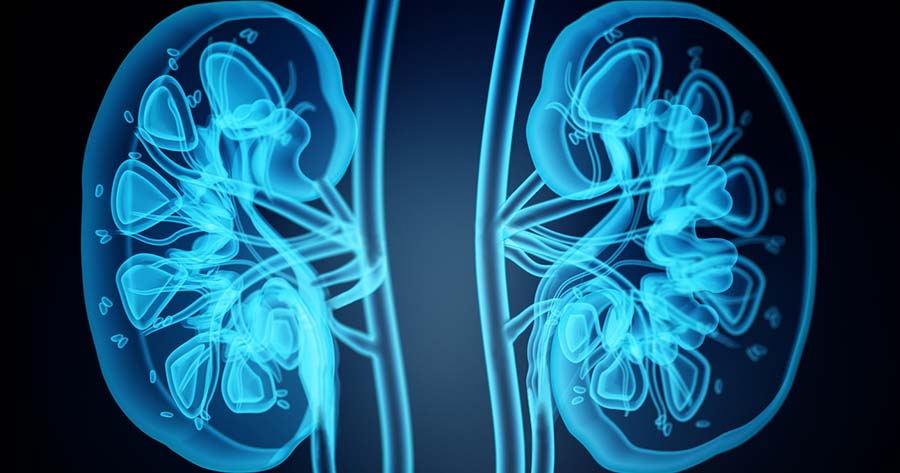Adolescents with chronic illness are at greater risk of disordered eating than those without chronic illness (Neumark-Sztainer et al, 1998). Furthermore, the prevalence rates of disordered eating among adolescent females with type 1 diabetes (T1D) are approximately twice as high as those without the condition (Rodin et al, 2002). Given that subclinical disordered eating (forms of disordered eating below the level required for diagnosis of an eating disorder) may be associated with poorer metabolic control and an increased risk of serious diabetes-related complications (Young-Hyman and Davis, 2010), it is important to attempt to explain the variation in disordered eating rates among adolescent females with T1D.
A range of individual and diabetes-specific factors are postulated to play a role in the development and/or maintenance of disordered eating in T1D. However, research has shown that family factors are strong correlates of disordered eating among adolescent females with T1D after taking account of individual or disease-specific factors (Colton et al, 2007). Indeed, studies among adolescent females with diabetes have shown that those with disordered eating are more likely than those without disordered eating to describe their families as less supportive, less structured, more conflictual and less communicative (Maharaj et al, 1998; 2001; Neumark-Sztainer et al, 2002).
Previously published research has also demonstrated that maternal eating and weight-control behaviours significantly predict eating disorders in adolescents (Colton et al, 2007). Communication about eating between parents and children is also shown to be important in the occurrence of dieting in children (Huon, 1996), and adolescent females with T1D who engage in disordered eating are more likely (than those who do not engage in disordered eating) to experience negative comments about eating or weight from one of their parents in the development and/or maintenance of weight and shape concerns.
The existing evidence therefore suggests that among female adolescents with T1D, disordered eating is associated with the attitudes towards eating and weight loss displayed by the adolescent’s mother and with their interpersonal relationships with their mother. The suggested process at work here is that the mother’s attitudes will be conveyed to the adolescent female, and this will then manifest itself in disordered eating. However, there is an essential question in this process that has not yet been explored: is the disordered eating of the adolescent female with T1D associated with the attitudes or disordered eating of their mother per se or is it the adolescent’s perception of her mother’s attitudes that is important? The present study attempts to address this gap in knowledge.
Methods
Participants were adolescent females diagnosed with T1D for at least 6 months and currently attending a diabetes clinic at a regional hospital. The mothers/female guardians of participants were also invited to take part in the study. All participants were provided with a questionnaire pack and pre-paid return envelope during attendance at an outpatient clinic. The study received approval from the statutory research ethics committee. The questionnaire pack contained the following:
- The Eating Disorders Inventory (EDI; Garner et al, 1983). The EDI assesses psychological and behavioural traits typical of eating disorders. Three subscales were used: Body Dissatisfaction, Drive for Thinness and Bulimia. These subscales were chosen as they are central and specific to eating disorders as operationalised in the Diagnostic and Statistical Manual of Mental Disorders (4th edition) (DSM-IV; American Psychiatric Association, 1994) and have been used in other studies of people with diabetes to screen for disordered eating (Daneman and Rodin, 1999). The EDI has demonstrated good reliability, with estimates of internal consistency for each scale ranging from 0.80 to 0.91, and validity has been demonstrated via factor analysis (Eberenz and Gleaves, 1994). The EDI was completed separately by the adolescent participants with T1D and their mothers.
- The Family Environment Scale (FES; Moos, 1974). The FES assesses the social–environmental characteristics of families. In this study, five subscales, which measure people’s perceptions of their actual family environment, were used: Expressiveness, Cohesion, Conflict, Independence and Organisation. Evidence for validity is provided by demonstrating the ability of the FES to discriminate between families categorised as distressed and those not categorised as distressed (Moos, 1974). Evidence for reliability (with internal consistency estimates ranging from 0.61 to 0.78) has also been provided (Moos and Moos, 1976). The FES has previously been used in studies assessing the family environment of adolescents with T1D (Maharaj et al, 1998).
The adolescents’ perceptions of their mothers’ attitudes towards eating and weight loss were assessed by several items that asked about whether their mother encouraged them to diet, the importance of thinness to their mother and their beliefs about how often their mother dieted or complained about weight. These items were based on those used in other studies investigating eating disturbances in young females (Byely et al, 2000).
For mothers, dieting behaviour was assessed by items that asked about the frequency of dieting and age at first diet. Mothers were also asked about their perceptions of the importance of thinness, the importance of appearance, their perception of their weight and their daughter’s weight in comparison to others, whether or not they talk to their daughters about weight loss and whether they encourage weight loss. The discrepancy between the mothers’ perception of their daughter’s ideal weight and their daughter’s current weight was calculated. Similar items have been used in previous research (Pike and Rodin, 1991; Byely et al, 2000).
The following information was also obtained for the adolescents: age, age at diagnosis of T1D, time since diagnosis and BMI. BMI was transformed to standard deviation scores, and adjusted for age and sex, as the fixed classifications of BMI are not appropriate for those under 18 years (Prentice, 1998). Information about the mothers’ BMI, employment status, educational level, and early feeding difficulties of adolescents was also recorded.
Analysis
Hierarchical regression was used to model the correlates of EDI subscale scores (Body Dissatisfaction, Drive for Thinness, and Bulimia). Given the number of potential predictor variables included in the study, and given the exploratory nature of the study, correlation coefficients were used to select variables for inclusion in the regression analysis and a backward selection method was used within the regression model, in an effort to produce the most parsimonious model. To be included in the regression model, variables were required to demonstrate a correlation with the outcome variables of at least an absolute value of 0.2.
In the subsequent hierarchical regression models, the adolescents’ demographic and medical variables were entered as the first block; the mothers’ EDI scores and attitudes towards eating were entered as the second block; the adolescents’ assessments of the family environment were entered as the third block; and the adolescents’ perceptions of their mothers’ attitudes towards eating and weight loss were entered as the fourth block.
Results
In total, 82 female adolescents with T1D and their mothers were invited to participate in the study. The participation rate was 84% (69/82) for the female adolescents and 73% (60/82) for the mothers. Demographic characteristics of the sample are presented in Table 1. The majority of the participants (81%; 56/69) lived in two-parent families.
Correlations between the adolescents’ EDI subscale scores and the potential covariates are provided in Table 2. The final regression models are presented in Tables 3–5.
The regression model in Table 3 explained 24% of the variance in the EDI Bulimia scale (adjusted R2=0.20; F[3,56]=5.824; P=0.002). The maternal variables explained 18% of the variance (F change[2,57]=6.138; P=0.004), with the FES Independence scale contributing the additional 6% (F change[1,56]=4.453; P=0.039).
The regression model in Table 4 explained 30% of the variance in the EDI Drive for Thinness scale (adjusted R2=0.25; F[4,55]=5.789; P=0.001). The maternal variables explained 10% of the variance (F change[2,57]=2.991; P=.058), the FES Expressiveness scale contributed an additional 11% of the variance explained (F change[1,56]=7.582; P=0.008) and the adolescents’ perception of the importance of thinness to their mother added the final 9% (F change[1,55]=7.297, P=0.009). In this model, the change in regression coefficients across blocks suggested that the adolescents’ perception of the importance of thinness to their mother might be mediating the relationship between the EDI Drive for Thinness scale and whether mothers talked to their daughters about dieting.
The regression model in Table 5 explained 52% of the variance in the EDI Body Dissatisfaction scale (adjusted R2=0.47; F[4,38]=10.445; P<0.001). The maternal variables explained 20% of the variance (F change[2,40]=5.158; P=0.010), the FES Cohesion scale contributed an additional 5% of the variance explained (F change[1,39]=2.523; P=0.120) and the adolescents’ perception of how often their mother diets added the final 27% (F change[1,38]=21.568; P<0.001).
Discussion
The primary purpose of this research was to determine whether female adolescents’ (with T1D) perceptions of the attitudes of their mother towards dieting and weight loss contributed to the explanation of disordered eating attitudes and behaviour. The findings suggest that adolescents’ perceptions of the importance of thinness to their mother are associated with the adolescents’ drive for thinness, and the adolescents’ perception of the frequency of their mother’s dieting behaviour are associated with the adolescents’ body dissatisfaction, even after controlling for demographic and medical variables, mothers’ behaviour and attitudes towards eating and weight loss, and family environment.
Indeed, the adolescents’ perception of the frequency of their mother’s dieting behaviour was the strongest covariate of body dissatisfaction in the model examined. It may be that the adolescents’ perceptions of the frequency of their mother’s dieting behaviour is a proxy measure of the adolescents’ perception of their mother’s dissatisfaction with their own body, i.e. the more mothers are perceived to engage in dieting behaviour, the more dissatisfied they are perceived to be with their body and this in turn impacts on the adolescent’s perception of body dissatisfaction.
Previous research has demonstrated that the dieting behaviour of mothers (Pike and Rodin, 1991) or the body dissatisfaction expressed by mothers (Davison et al, 2000) is associated with body dissatisfaction among their daughters. However, the present research found that the adolescents’ perception of the mothers’ dieting behaviour outweighed the mothers’ report of their own body dissatisfaction or dieting behaviour in terms of explaining the adolescents’ body dissatisfaction. This study, therefore, shows that it is the adolescent’s perception that is key rather than the mother’s self-report.
The same pattern was observed in explaining drive for thinness. In this case, one of the strongest covariates in the model was the adolescents’ perception of the importance of thinness to their mother, yet the mothers’ self-report of the importance of thinness was not significantly correlated with the adolescents’ drive for thinness.
It may be that the relationship between the adolescents’ drive for thinness and body dissatisfaction and the mothers’ reports of eating and weight-loss attitudes and behaviour is mediated by the adolescents’ perceptions. Unfortunately, the present sample size was not sufficient to examine these mediating pathways.
The assessments of disordered eating were all negatively related to different aspects of family environment. Lack of cohesion in the family (as reported by the adolescent) was found to be associated with body dissatisfaction; lack of expressiveness was found to be associated with drive for thinness; and lack of independence was found to be associated with bulimia.
Previous research has shown that all scales of the FES (Maharaj et al, 1998), and the Cohesion scale in particular (Neumark-Sztainer et al, 2002), are associated with disordered eating among adolescent females with T1D. The present research expands on this information by highlighting the specific types of family environment problems that are associated with the particular types of disordered eating.
Other research has shown that independence in the family environment is lower among females with bulimia than females without bulimia (Ackard and Neumark-Sztainer, 2001), which supports the present findings, although this previous research found that family environment was poor in general in the families of females with bulimia. The development of bulimia has been associated with overprotection of children by their mothers (Wade et al, 2001), which is a form of restraining independence. Overprotection by mothers of adolescents with T1D is not unusual, as the mothers strive to control the potential adverse consequences of diabetes (Wiebe et al, 2005). Therefore, adolescent females with T1D may be engaging in bulimic-type behaviour as a reaction to this overprotection, in an effort to assert their independence (Anderson and Wolpert, 2004).
Adolescents’ perceptions of body image and the desire for thinness are influenced to some extent by the media, particularly music videos (Groesz et al, 2002), and parents have an important role to play in moderating this potentially unhelpful influence (Derenne and Beresin, 2006). In a family environment characterised by low expressiveness, it is unlikely that conversations will take place to explore the adolescent’s thoughts and feelings about thinness or it is unlikely that there is a sufficiently open atmosphere to allow the appropriateness of the adolescent’s thoughts and feelings to be addressed. Perhaps, therefore, the lack of expressiveness in a family environment allows the development of unhelpful cognitions about thinness to develop.
Body dissatisfaction was found to be strongly associated with lack of family cohesion in the present study. Body dissatisfaction has also been linked with depression (Keel et al, 2001) and low self-esteem (Tiggemann, 2005). Given the link between low levels of family support (or cohesion) and low self-esteem (Cooper et al, 1983) and depression (Cumsille and Epstein, 1994) among adolescents, the finding of the present study is not surprising.
While interpreting these findings, it should be noted that there was a potential opportunity for mothers and daughters to collaborate on completion of the questionnaire provided in the study. Although they were asked to complete questionnaires separately, this could not be enforced; therefore, it is possible that some daughters’ responses might have been influenced by their mothers or vice versa. This possibility potentially limits the generalisability of the findings.
Conclusion
The present study identifies several perceptions about mothers’ behaviour and attitudes and the family environment, held by adolescent females with T1D, which should be considered when attempting to identify such individuals at risk of disordered eating attitudes and behaviour. These factors could be assessed using screening instruments or routine questioning during outpatient clinic visits.
The findings suggest that a more systemic approach to diabetes treatment packages might be warranted. Wider-based family interventions might include parenting advice about how to parent a young person with diabetes in such a way that enhances positive communication, promotes cohesion, and encourages expressiveness and independence especially in relation to diabetes management.





NHS England to allow weight-loss injections for prioritised patient cohorts from late June.
5 Apr 2025